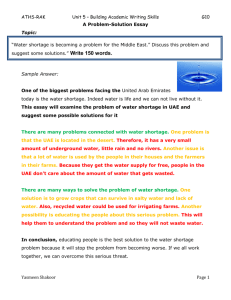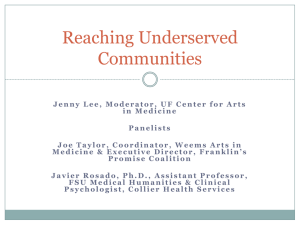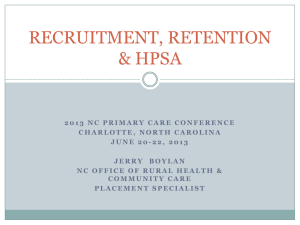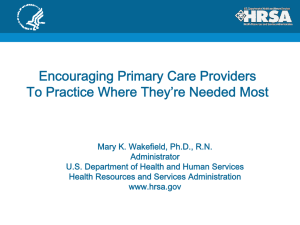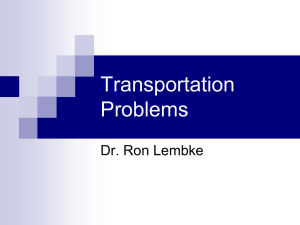Midterm Powerpoint
advertisement
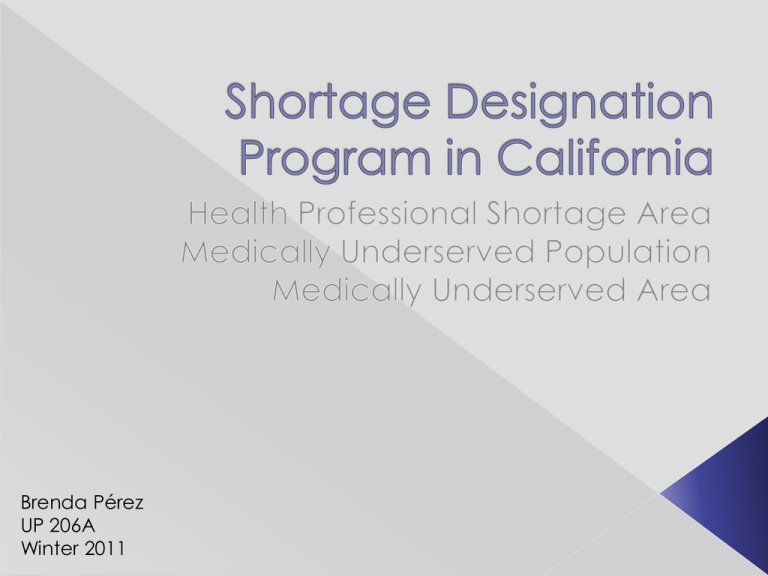
Brenda Pérez UP 206A Winter 2011 Federal program under the Health Resources and Services Administration Develop shortage designation criteria to determine: › Health Professional Shortage Area (HPSA) › Medically Underserved Area (MUA) › Medically Underserved Population (MUP) Approximately one third of Californians live in a designated HPSA, MUP or MUA.¹ ¹ CA Office of Statewide Planning and Development (OSHPD) • Medical Service Study Area (MSSA): • Calculated from the most populous census tract within the MSSA. Based on the Index of Medical Underservice Medically Underserved Areas (MUA): › Areas in which residents have a shortage of personal health services. Medically Underserved Populations (MUP): › Populations who face barriers to health care. ¹US Department of Health and Human Services Concentrations of MUAs: • East LA • Downtown LA • Long Beach • Health Professional Shortage Areas (HPSAs) › HPSAs may be designated as having a shortage of primary medical care, dental or mental health providers. They may be urban or rural areas, population groups or medical or other public facilities. Scoring based on: › Population-to-Primary Care Physician Ratio › Percent of the Population with Incomes below 100% of the Poverty level › Infant Mortality Rate or Low Birth Weight Rate › Travel Time or Distance to nearest available source of care ¹ ¹US Department of Health and Human Services Large regional disparities Health professionals have a large presence in the San Francisco and Los Angeles areas Incentives for health professionals to relocate do not seem to be working Possible infrastructure challenges: › Lack of hospitals in rural areas › Lack of access to specialized care Inset Map Point Graduated Symbols Graph Buffering Geoprocessing (Clipping) Aggregating Attribute Fields


